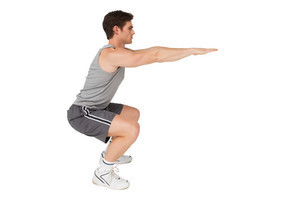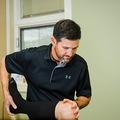
The hip consists of a “ball-and-socket” joint that is formed between the femoral head and the
acetabulum, a part of the pelvic bone. As a result of its shape the hip joint is capable of a wide
range of motion.
When evaluating patients, we commonly find that the hips lack quality movement. Although
stiffness can factor into how well we move, we also must consider motor control. Motor control
refers to coordination and efficiency of movement and may not be limited by mobility or
strength issues.
The hip hinge is an excellent motor control exercise to transition into more functional
movements like squatting, deadlifting, or picking anything up from the ground. It targets the
posterior chain, or the muscles on the backside of the body which include the glutes,
hamstrings, and erecter spinae (low back).
Activating these muscles helps to re-groove movement patterns so the risk of injury decreases
when performing anything that requires a squat to pick something up or put something down.
The abdominal muscles also assist and ultimately add needed core stability with the hip hinge.
When performing the hip hinge, the spine should stay in a neutral position with the movement
coming from the hips. It may seem difficult to perform at first, but with practice and repetition,
it’ll become a skill that can be used in daily life.
Hinging with the hips instead of bending with the back will reduce injuries in the short and long
term, especially to the low back. Other benefits such as improved core strength, balance, and
range of motion in the trunk and hips can also be seen with the hip hinge.




